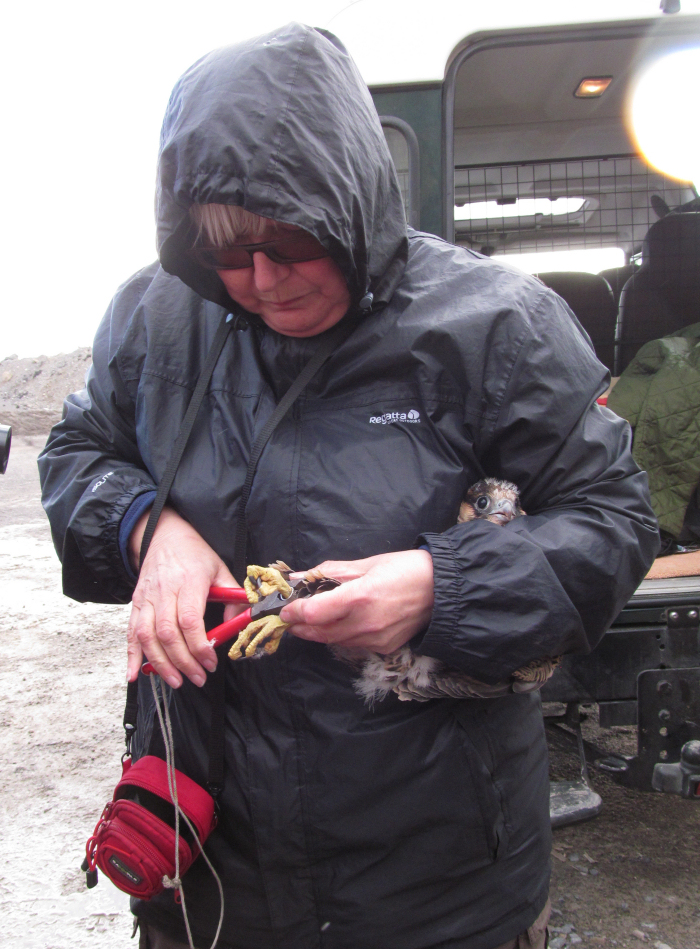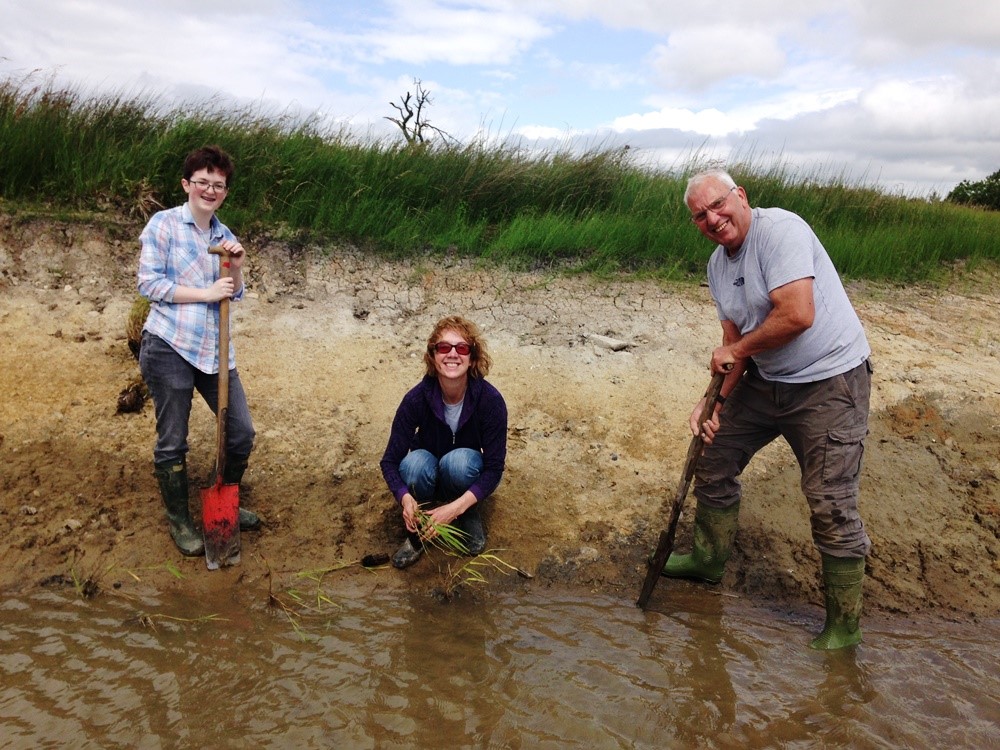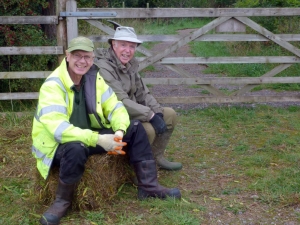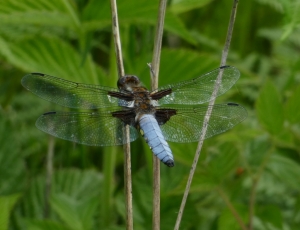Blog Archive (27) Posts Made in June 2015
Heatwave Hits Foxglove
Tuesday, June 30th 2015
With the thermometer hitting 20 degrees centigrade before we even opened up today we knew it was going to be a scorcher on the reserve. The bees got so hot by lunch time that the majority of them left the hive and settled on a tree in the back garden. We knew they weren’t swarming this time because the queen remained in the hive. After an hour or so they all made their way back into the hive.
Despite the heat volunteers showed up in good numbers and completed a couple of tasks around the reserve. One group continued the good work in the back garden by giving the pond a makeover.
The rest of the volunteers were out and about continuing the vital work of Bracken slashing. This is a task that needs completing each year in order to keep the Bracken on the reserve under control.
The patches of Bracken around the reserve are less dense and much smaller than last year which shows that the volunteers' hard work over the years is really paying off.
Thank you to everyone who came and helped out at Foxglove today.
What Lurks Beneath
Monday, June 29th 2015
One of our regular visitors has brought a waterproof camera to Foxglove over the last few weeks to try and get some images of our underwater creatures in their natural habitat. So far the camera has been deployed in the scrapes and snapped this water level picture just before taking the plunge.

The next image captured below the surface shows a small proportion of our tadpole population in varying stages of their development.

Finally you can see our resident Sticklebacks along with the tadpoles, making their way through the pond.

Thank you Ian for providing us with these pictures and giving us a rare glimpse into the underwater habitat here at Foxglove. We look forward to seeing the results of you next visit.
Flowers Galore
Sunday, June 28th 2015
As the weather has finally warmed up, so the flowers are blooming across the reserve. Yorkshire Fog is colouring some areas pink.
Cotton grass which is actually a sedge, is showing its white fluffy heads in a pond in the Scrapes, along with Greater Spearwort.
Local names and those told to us by our parents often cause a little confusion. Dithery Docks is a northern, possibly Northumbrian, name for Quakling Grass.
Rose flowers do not remain in bloom for long. They are very atractive to many insects, including bees.
Hidden away on a little walked path, Wood Cranesbill is flowering. From only one plant it is now beginning to spread.
Orchids continue to surprise us by showing their beautiful flower spikes in areas where they have not been seen before. Unfortunately they do not grow with a name tag or bar code attached! So with conviction (until someone else names them!) Common Spotted Orchid is shown below.
This is a Northern Marsh Orchid.
A possible Common Spotted x Northern Marsh Orchid hybrid.
And this is an Early Marsh Orchid.
Although we may not be able to name them all, we enjoy their splendour and have fun trying to work out the petal shape, patterns, lines, squiggles and spots or no spots!
Are You Sitting Comfortably?
Saturday, June 27th 2015
Are you sitting comfortably? (Only those of a less than young age will remember this comment!) Then I'll begin.
As has been mentioned the Cape Wrath team headed out across Arkengarthdale on Thursday. On Friday they were follwed by those going to Edinburgh. An unringed Golden Plover chick was found, missed by the Thursday travellers! It now sports a ring!

News from the north today, sent by Adam, said that they have had good weather and spent the afternoon on Loch Borralie.
They ringed a good number of Herring, Common and Black-headed Gulls as well as some Sandwich Terns chicks, shown below. These chicks are not long hatched, as you can still see their egg tooth that they use to help them hatch.
Back at Foxglove the warm weather encouraged the invertebrates to show themselves. Taking a photograph of an orchid, it was not until it was downloaded that a little blue mark was noticed. When this was enlarged it was found to be a tiny insect.
We are either becoming more observant or there are more Cardinal Beetles around, as they are seen more frequently. This one co-operated and turned sideways on so his toothed antenna can be seen and also his large jaws which he uses to catch and eat other insects. His red colour protects him from predators as they think he is toxic.
Foxgloves are coming into flower and their pink stems can be seen in many places around the reserve. In one flower a spider in its web, has taken up residence!
Dog Daisies make a beautiful show opposite the heath. Sometimes, if they are examined closely, a variety of insects can be found on them. Some are feeding from the pollen and nectar, whilst others await prey! These insects have very long legs.
The bee saga continues. On arrival this morning the bees were checked to see that all was calm. A blue dot moved! A closer look and yes the Queen is back in the hive! There are still queen cells in the hive.
What happens next?
Interesting Bee Activity
Friday, June 26th 2015
Yesterday the bees decided to leave the hive and relocate on one of the trees in the back garden.Thinking that they were swarming, a process in which the queen takes a proportion of the hive away to find a new home after they have reared a possible new queen, we called in our bee keepers to come and try to catch the ones that were leaving.
The bees then surprised us all and started to head back into the hive. We kept an eye out for the queen but she hadn’t come back when most of the workers we already in the hive. She was then spotted trying to make her way back into the hive where she was attacked by a large number of her workers.
.jpg)
The workers surrounded her in a tight ball, ultimately killing her. This may seem a drastic thing to do but it is a completely natural process that has now paved the way for a new queen to emerge in the next few days from the queen cells that are clearly evident in the hive.
We would like to thank Alison and Allister our bee keepers who once again rushed down here at a moment’s notice and for their ongoing help to keep our bee hive thriving.
Tea and a Biscuit
Thursday, June 25th 2015
This morning Team Cappuccino was at it again, arriving early at Richmond Town Hall to set up for their regular amazing coffee morning.
Everyone was welcomed into the hall with a friendly smile, served with tea or coffee and of course a biscuit or two.There were a number of stalls, with a fantastic array of cakes, tombola, bric-a-brac, plants, a raffle and Foxglove goodies all for sale.

The morning was once again a fantastic success raising a whopping £325, all in aid of Foxglove. We would like to thank everyone involved; Team Cappuccino led by Tony Cooper who give up a lot of their time to put on this event, everyone who baked, donated raffle prizes or were involved in any way. Tony has asked to pass on his thanks to first time Team Cappuccino helpers TJ, Ray, Lynette and Alicia.
The Moor
Wednesday, June 24th 2015
The end of month flower walk usually covers as many different areas of the reserve as possible, but today we concentrated on the moor. On the wetland Adder's Tongue, orchids, Heath Speedwell and Cotton Grass were some of the plants seen. Marsh Cinquefoil is also in flower.
Out on the moor itself, walking along one of drainage ditches, a movement. It was a Green Tiger Beetle which has been recorded on the observation board for the last couple of weeks. It was difficult to get a photograph as it was moving quickly.
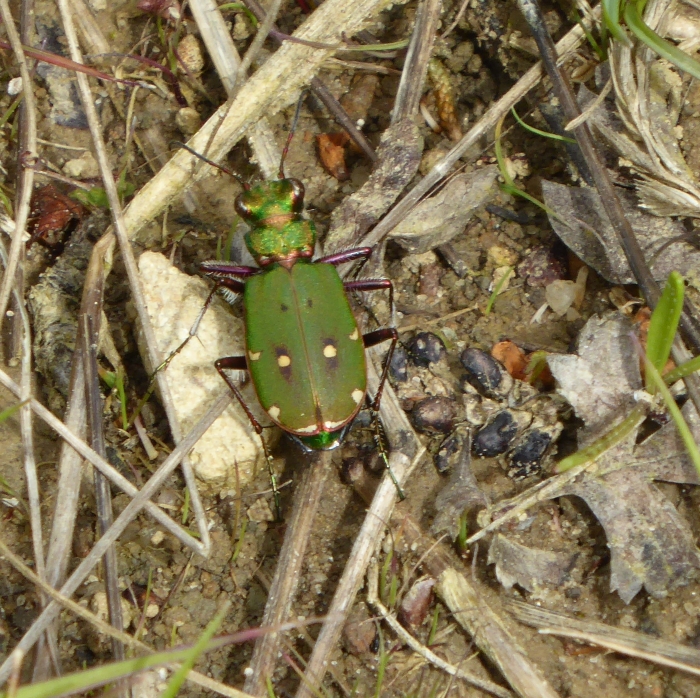
Something bright red lifted from the grasses on the middle moor and it could only be a Cinnabar Moth. A Dark Green Fritillary and a Red Admiral were also seen in this area.
Yellow Rattle is thriving and can be spotted in the grass sward. There are some flowers that have set seed but it is not yet rattling!
On the far moor Foxgloves are now in flower.
Tawny Owls boxes have been checked and chicks ringed. Then it was the Kestrels and small boxes and finally the Buzzards. Now the ringing team are heading for their annual trip to Cape Wrath. Technology willing, we should receive some photographs and information about their activities. They set off on their long journey early tomorrow morning.
One member of the team will join them later as he is taking part in the Waterloo Celebrations in Edinburgh, over the weekend.
A safe journey and our best wishes to you all.
A Productive Day
Tuesday, June 23rd 2015
It was a busy day at Foxglove. Our volunteers turned up in good numbers and the weather was kind, enabling us to get lots done. This week we have two work experience students TJ and Alicia with us who have been out and about learning about what happens at Foxglove. Today they have been working with the volunteers. Matt, TJ and Vince installed two new log benches in the woodland.

Meanwhile, some of the volunteers fixed the fence along the reed bed, while others completed the painting of the field centre’s garden fence and cut back overhanging branches from the paths and net rides. Alicia and some of the other volunteers became skilled at bracken bashing which is a necessary task as it can become very invasive if left unchecked.
The rockery in the back garden was given a total makeover today and now looks very smart indeed! We hope our bees will like all the new flowers we have planted in it.
We achieved a lot today- many thanks to everyone who gave their time to help out.
Pilwort
Monday, June 22nd 2015
Our volunteers have been busy surveying areas of the reserve looking for some of the more unusual plants that are found here. Pilwort, an unusual aquatic fern, is known to grow on the wetland and its presence helped us join the Flagship Pond Scheme last summer. This scheme recognises the top 1% of ponds in the country in terms of their value for wildlife, recognising areas with a rich biodiversity and supporting rare plants.
Pilwort is an internationally threatened species; it is fantastic to see it thriving in this habitat here at Foxglove. It is quite hard to spot because it has thin, grass-like leaves and often grows with water grasses or small rushes. It takes its name from ‘pills’ which are tiny round spore cases at the bases of the stems.
In other news make sure you are in tomorrow for the six o’clock news as Foxglove will feature on BBC Look North!
CES 5
Sunday, June 21st 2015
A glorious sunrise was the backdrop as the bird ringers raised the nets for CES 5.
Once all the CES nets were in place other nets were put in. Net 44 crosses Risedale Beck and today, after not being in use for some time it was erected.
Adam crossed the beck and held the net. Eventually the net pole arrived to enable him to complete the job!
We were very pleased that a Dipper was caught and returned to the ringing room. Although they have been reported regularly around the site this was the first one ringed at Foxglove - and quite an occasion. They are adapted to dive and swim underwater as they hunt for food, and the beck is ideal habitat for them.
Two juvenile Kingfishers were ringed and were later seen feeding in the Voley Ponds.
Chicks have been ringed in the nest boxes over the last few weeks and it was very pleasing to see that 35 Great Tits had fledged successfully. Other newly ringed birds included a family of Long Tailed Tits and 19 Willow Warblers. In all a total of 165 birds were processed.
On the day it is a team effort to ensure that CES runs for the ten and a half hours required. Nets are raised, net rounds carried out every 20 minutes, cups of tea made, birds are ringed and checked, data entered into IPMR and then all the nets taken down, bird bags checked and the ringing room tidied before heading home. However the team extends its very sincere thanks to all the volunteers who are involved in ensuring that the net rides and paths between them are in excellent condition, so allowing for easy access and very efficient mist netting . A huge thank you to everyone.
The final numbers have been reported for the moth morning. 583 moths of 104 species were recorded. There are 13 new species for the reserve, three of which are only the second record in VC65, the first being in the 19th century!
A Wet Moth Morning
Saturday, June 20th 2015
The night had been overcast, not too cool and just right for moth trapping. By the time we came to empty the traps, located in different habitats around the reserve, that had all changed and it was wet. Instead of us going to the traps, the traps came to us, on the front verandah.
Moths were identified and recorded as the egg cartons were removed. The minimum number of species stands at 93, but this is likely to increase when some of the micro moths are identified later.
To ensure that we had a photograph of some of the moths, they were taken on the egg carton, not a good background, but a record. Sometimes we were able to transfer them to a more suitable place, although some flew off immediately.
Common Lutestring was one that did not co-operate. It was noted in 2010 and then not again until last year. The caterpillar feeds mainly on birches but has been reported on Alder, Hazel and oaks, all of which are in plentiful supply around the reserve.
Another moth that did not like being removed from the egg carton was Small Yellow Wave. This was last seen on the Bioblitz weekend in July 2013. Field Maple, Sycamore and Alder are the food plants of the caterpillar.
When the moth below was found, everyone said 'Isn't is beautiful!' It lives up to its name - Beautiful Carpet. Food plants include Bramble, Raspberry and Hazel.
A Ruby Tiger moth was removed from the trap and its colours are quite remakable. Some of the trees planted around the reserve have been specifically chosen as they are foodplants of moths. This one enjoys the leaves of Spindle. Records show that it has not been trapped since 2010.
One of the moths we love to catch is the Elephant Hawkmoth. Again some of its foodplants can be found in profusion on the reserve, willlowherbs and bedstraws.
Many thanks to everyone who helped set out and collect in the moth traps and to Charlie, Jill and Alan who identified them for us.
As the rain stopped and the temperature began to rise a little so other insects became more active. It was a surprise to see a bee disappearing into the Flag Iris flower. You can just see its bottom.
The blue damselflies began to leave their perches and move off to hunt.
Butterflies
Friday, June 19th 2015
During the summer we complete weekly butterfly surveys which cover the majority of the reserve. So far, with the cold spring weather, we have found many species emerging later than usual and in fewer numbers. Last Tuesday, however, saw warmer weather and higher counts of many species. It was particularly nice to have the first specimens of Large Skipper and Small Heath recorded. John even managed to get this brilliant photo of a Small Heath feeding on Clover.

Our thanks go to the volunteers who help with these surveys during the summer months.
Painting and Strimming
Thursday, June 18th 2015
The volunteers today were busy mowing and clearing vegetation from the net rides and paths, in preparation for the CES bird ringing session that we have planned this weekend.

Meanwhile, others continued the good work of the Tuesday Volunteers, and continued painting the fences around the garden at the Field Centre.

We would like to thank everyone for their hard work around the reserve today.
Ringing Activities
Wednesday, June 17th 2015
The bird ringers have been hard at work during the evenings this week visiting some of the Buzzard nests on and around the training area. They have been assisted by Sean Stockdale, a local tree surgeon, who has skilfully climbed the trees to reach the nests before carefully lowering the chicks to the ground.
To date, 24 Buzzard chicks have been ringed with many more nest still to visit over the coming days. Once ringed, the birds are quickly returned to their nest where they settle and await their next feed.

Last night also saw a brood of four Barn Owl chicks ringed.

This is the first known successful nest of Barn Owls on the training area in the last 20 years, so it was a real privilege to be able to find and ring these chicks.

As always we are grateful to the ringing team for their efforts and, of course, to Sean for the time he gives to make this possible.
A Productive Day
Tuesday, June 16th 2015
Our volunteers today were busy giving Foxglove a makeover. The reserve is now looking very smart indeed. The verges of the main driveway were strimmed where the vegetation is growing long, and the potholes in the road were filled.
The fences around the Field Centre and along the access track were repaired
And then repainted
Meanwhile, other volunteers tackled the area around the Field Centre itself, painting the posts, and clearing the weeds from the gravel borders. The rockery at the back of the Centre was also weeded, taking care to leave the plants that are a popular food source for our bees.
The whole place now looks much tidier, thanks to the hard work of all our volunteers.
A Rainy Day
Sunday, June 14th 2015
It has been a wet day at Foxglove today. Although this meant it wasn’t a nice day for being out and about on the reserve, the last few weeks have been so dry that the plants and trees will appreciated a drink. The Bird-Cherry Ermine moth caterpillars were particularly noticeable today, living inside their cottony webs that protect them from predators. The webs also appeared to act as a fairly effective umbrella and the caterpillars could be seen feeding away, quite dry, inside. These caterpillars will form little white chrysalises in the Bird-Cherry trees, before hatching out into small white moths later in the year.
Despite the weather, several families still braved the elements to visit the reserve, donning wellies and waterproofs for a walk out, and then returning to the Field Centre to watch the birds on the feeders from the comfort of the classroom and enjoy the indoor activity sheets and displays. Those who did venture out found that there is still always something to see, with mallards, tufted ducks and moorhens on the lake, and even the more inconspicuous plants looking quite pretty when covered in raindrops.
Buzzards
Saturday, June 13th 2015
The bird ringers have spent many nights out on the training area freezing and getting blown away when checking next boxes and looking for wader chicks. One night last week, they left hats and scarves and thick coats in the landrovers, just in case. Blue sky, sunshine and warm temperatures were just amazing!
Buzzard nests were on the agenda - and they don't always conveniently nest in accessible places as can be seen in the pictures below!
Some are behind fences topped with barbed wire
and when there is no steep hill or fence to negotiate there are midges.
The light was changing and the temperature dropping so the coats left in the landrovers were needed as we approached the last nest.
As usual it was high in the top of a tall tree. Sean, who has helped the bird ringers for the last 19 years, climbed to the nest, but even he was not safe from the midges!
The nest could be seen from the ground and a fully zoomed photograph just shows one of the chicks taking an interest in the proceedings.
Once the chicks had been placed in the bird bags and lowered to the ground they were ringed. The scribe, busy taking photographs, delegated the task to Tony. Hope he recorded eveything accurately!
Carefully the chicks were returned to their nest and everyone made a hasty retreat from the midges!
A huge thank you to everyone who helped during the evening. Nine fit and healthy chicks were safely ringed.
Kellbank Primary School Visit
Friday, June 12th 2015
Kellbank Primary School enjoyed a visit to the reserve in glorious weather today. They found Leeches, Sticklebacks and hundreds of tadpoles while they were pond dipping. At the outdoor classroom newts were seen in the damp, dark patches underneath logs. Finally as part of the habitat walk some fantastically creative artwork was created on the woodland floor.
While we were busy leading activities for the school visit, John was hard at work, servicing all of the tools. They are now all looking great and ready for a day’s work again!
Thank you to everyone who has helped out here today.
Springtime Ringing
Wednesday, June 10th 2015
Volunteers have been assisting the bird ringing team in their efforts to re-visit the many nest boxes around the training area over the past few days. The majority of the boxes have now been done, with only a few left to ‘mop up’ early next week.
We have found that numbers of chicks have been lower this year, with a few nests deserted; most likely due to the cold weather and its effect on the abundance of insects. Despite this, we have still ringed more than 650 chicks, with over 90 of these being Pied Flycatchers.
As the work checking the nest boxes ebbs away, we instead start to focus our attention on the many waders that nest through this area. Already we have found several Lapwing and Snipe chicks as well as Oystercatchers and Curlew.
Thank you to everyone who has helped us over the past few weeks.
Cut and Burn
Tuesday, June 9th 2015
With Spring now fully upon us at Foxglove, the reserve has turned very green, with trees and bushes growing at an immense rate. Our volunteers and staff have spent a lot of time over the last couple of weeks pruning, lopping and sawing away, keeping the paths, tracks and net rides throughout the reserve tidy and clear of overhanging branches. This morning began with more pruning for some of the volunteers, cutting back the path behind the visitor centre and trimming the blackthorn tunnel. This resulted in yet another large pile of cut branches.
It was a calm day, perfect for having a bonfire without setting fire to the surrounding trees, so the task for the rest of the volunteers was to start burning some of the enormous pile of branches that has been building up. Everyone donned their oldest clothes- ones that they didn’t mind burning holes in, and set to work, cutting the branches into small enough pieces to feed the ever-hungry fire. It was a very successful day, and we managed to burn everything that has been cut down so far.
Many thanks to everyone for all your hard work today; it is great to see so much progress made.
Foxglove on TV
Monday, June 8th 2015
Richmond Methodist Primary School visited the reserve for the second of their three school visits. They were joined by a reporter, Olivia, from BBC Look North who was filming a piece about the reserve and the fantastic work that goes on here. She got some great shots of the students pond dipping as they learned about food chains and the creatures found in this habitat.
At the outdoor classroom the children were excited to discover the bugs and beasties that inhabit the dark damp world underneath log piles.
The story for Look North will be shown on the local evening news over the next few weeks and will tell the story of Foxglove, highlighting the hard work of our volunteers. It will also cover some of the habitats found here and their importance for biodiversity and rare species, encouraging more people to come and enjoy the reserve.
.jpg)
As well as interviewing the Reserve Managers and Tony, volunteers were also asked to give their perspective on life at Foxglove.
We will let you all know, as soon as we can, the date that this will be broadcast. We are very grateful to all of our volunteers who helped with the school visit and to Richmond Methodist Primary School who agreed to allow us to film educational activities today.
CES 4
Sunday, June 7th 2015
As dawn approached the sky turned red.
The reserve managers and volunteers had mowed the net rides and cut down and trimmed back any overhanging branches. This made the opening of the nets much easier. A huge thank you to everyone involved in this task ensuring that the net rides were in such good condition. Below you can see Jenny's group wondering if they had brought out the correct nets!
Some juvenile birds made it into the ringing room, a Robin being the first.
Followed by the first fledged Great Tits ringed in the nest boxes. A Reed Warbler, ringed as a juvenile last year has returned which was a very pleasant surprise as their song has been absent up to now. What is emerging is that 2015 will be remembered for being a year of poor productivity. Judging by comments posted by birders and ringers over many areas of the UK nest boxes just like ours, are being found with clutches of cold, dead chicks or deserted nests with eggs that are never going to hatch. Already we have found several dead Pied Flycatchers, and the Tawny Owl results for this year are less than half as good as last, reflecting the picture in other parts of the UK.
Sometimes other animals are found hanging onto the nets. Firstly, we have a species of soldier beetle, a voracious carnivore.
And secondly a Large Red Damselfly, which only hung on for a few seconds, just long enough to get a photograph.
Thank you to everyone who helped today, especially those who made numerous cups of tea and provided interesting 'stickies'!
Out and About
Saturday, June 6th 2015
On Wednesday we were slightly surprised to see some yellow showing in the Flag Iris buds. By Friday they were out in full bloom. These bright yellow flowers can be seen through the Scrape ponds and in the lake.
Common Dog Violets grow everywhere and have been in flower for many weeks. Their purple colour often shows easily through the green vegetation.
Along Risedale Beck Water Avens or Geums as they are sometimes known, grow in profusion. Last year there were no mutations found at all, even in their regular growing place. One has appeared this year, in a different area.
Trying to take a close up of Bogbean the earth under my feet moved! On closer inspection tiny grasshoppers were found! There is one in the middle of the photograph! Camouflage in action! Over the next few weeks they will moult several times until they are about two to three centimeters in length.

The bird ringers continue to return to boxes where chicks need to be ringed. The weather has been very cold and windy; don't be fooled by the blue skies! Hats, coats and gloves are needed.
Peregrines are schedule one birds and a special license is needed to ring these rare birds. They do not nest in boxes but on cliff ledges. Two chicks can just be seen.
A vast amount of organisation is required to ensure everyone is there to help. Climbers from Low Mill very kindly give of their time to collect the chicks from the nest.
The chicks are put into bags and lowered down to the ground where they are carefully ringed, with a BTO ring and a coloured ring, so that when seen through binoculars or telescope they can be identified. There was a surprise at the nest as there were three young, not just the two that had been seen. This is the correct and safe way to hold the chick, both for the chick and the ringer.
To weigh the chicks they are returned to their bags. Two females chicks and one male were ringed, females weighing much more than the male. They were then carefully returned to the nest.
A huge thank you to everyone who has been out and about ringing chicks and recording flora and fauna.
Richmond Methodist School Visit
Friday, June 5th 2015
A Key Stage One group from Richmond Methodist School visited the reserve today. The students' three activities throughout the day included pond dipping, where a Leech was caught, and during one session they were able to see a predator in action as a Great Diving Beetle Larva caught a Stickleback.
During the minibeast session they learnt about camouflage and the benefits of this for both predators and prey. On the habitat walk they compared the many different habitats on the reserve and discovered what creatures might live in each.
We hope you all enjoyed your day with us and will be back soon with your families.
Success!
Wednesday, June 3rd 2015
Volunteers, this morning, led a guided walk looking at the early summer flowers found on the reserve. Sixty three different species were recorded on the walk including Northern Marsh Orchid. Orchids grow alongside many of the pathways that wind their way through the different habitats at Foxglove. It is good to see them back again in their usual spots.
Most exciting to see was Yellow Rattle in flower in our wildflower meadow on the middle moor. This species was planted last year to help suppress the growth of coarse grasses allowing for a more diverse ground flora to develop. It is a real success story for the reserve to see that this has taken so well.
Thanks to everyone for leading the walk and identifying the many different species of flower.
Foxglove Covert Festival of Nature
Tuesday, June 2nd 2015
Come and enjoy the fun at the Foxglove Covert Festival of Nature, taking place on the weekend of 18th and 19th July 2015.
.jpg)
Why not join us for a guided walk to learn more about the flora and fauna at Foxglove. Local naturalists will be on hand to introduce you to the flowers, butterflies, dragonflies, ferns, birds and fungi around the reserve. Try your hand at identifying some of the moths caught over the weekend, or come along for the evening bat walk.
Over the weekend there will also be green woodcraft workers demosntrating their skills at wood turning and chair making, and childrens activities, including owl pellet disecting. The weekend will be rounded off with a BBQ.
.jpg)
Save the date for your diaries!
Bird Ringing Update
Monday, June 1st 2015
Many of the woodlands across the training area are home to small nest boxes which are used by several tit species, Pied Flycatchers and Redstart. The bird ringers have been very busy over the past few weeks visiting all of these woodlands to survey the boxes and are now starting to make return visits to the woodlands to ring the chicks.
.jpg)
We re-visited one woodland this morning expecting to find chicks large enough to ring, however, many of the birds were still incubating their eggs, in other boxes the chicks were only just hatching. We suspect that the cold temperatures are in part responsible for this. Insects are also appearing much later than usual which will have a knock on effect for birds feeding their young all resulting in a slower rate of development and growth.
Several Pied Flycatchers have been controlled in our nest boxes this year; this means that they were ringed at another site before the bird ringers found them nesting on the training area. It will be interesting to see where they have come from once the data is returned from the BTO.
Several Redstart nests have also been found; these birds did not have a fantastic year in 2014 so we are glad to have found more nests this year and to have ringed the first brood of chicks earlier today.

As well as all of the smaller nest boxes the bird ringers have been out re-visiting the Kestrel boxes over the last week and to date have ringed about 30 chicks, with about 30-40 more to ring over the coming days. A good number of Kestrels are still sitting on eggs, which is unusual this late on into the spring.
.jpg)
Thank you to all of those who have helped with this and all the other bird ringing activities associated with the reserve.

.JPG)
.JPG)

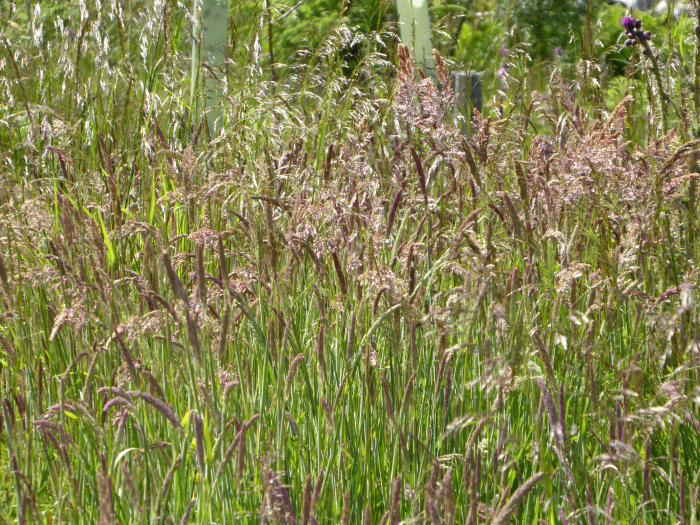



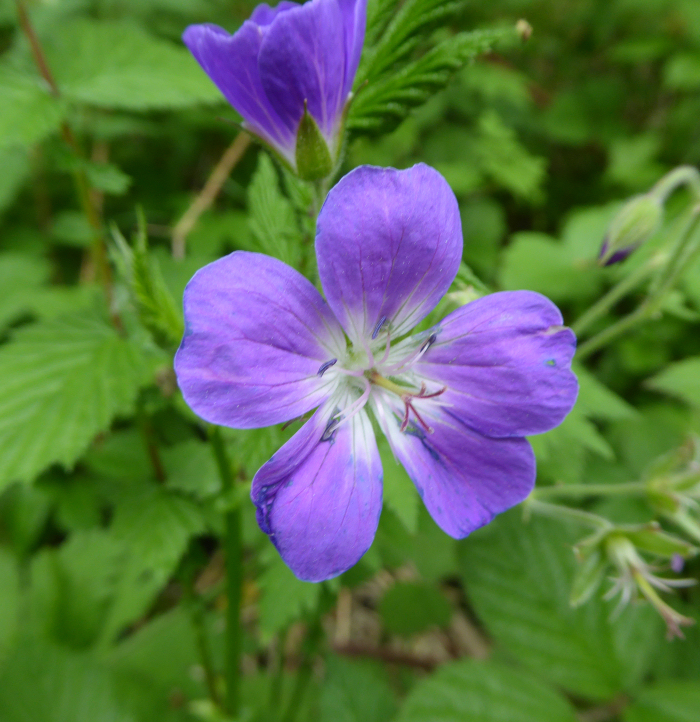
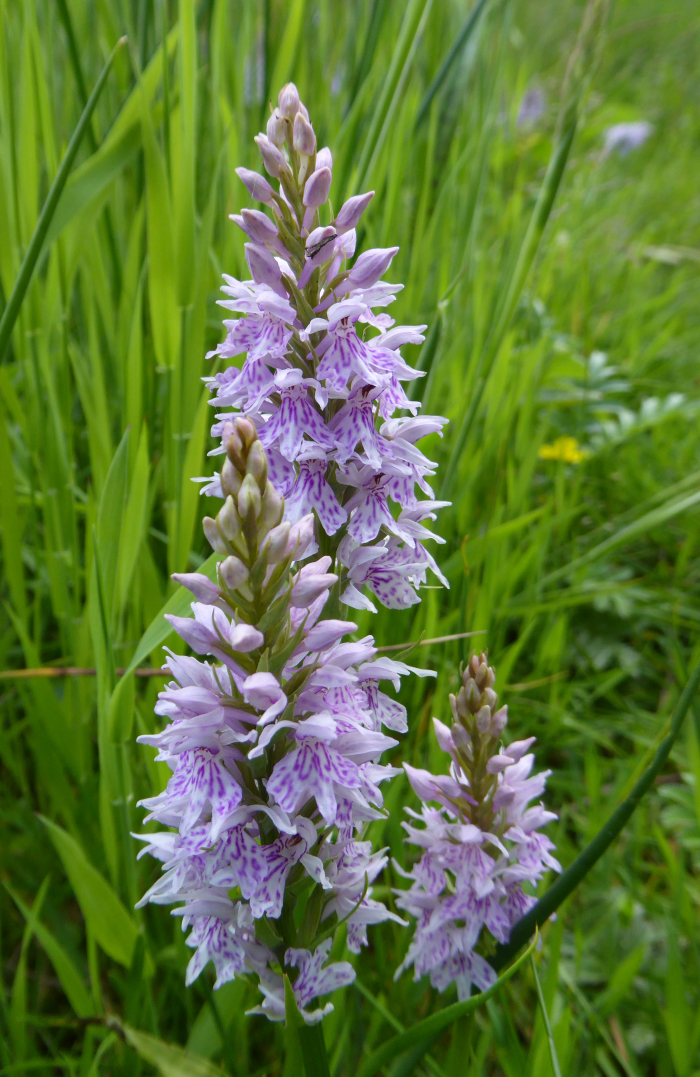




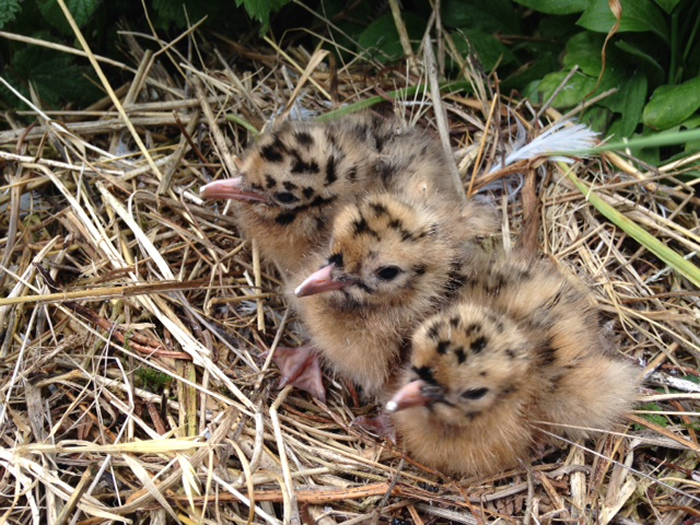

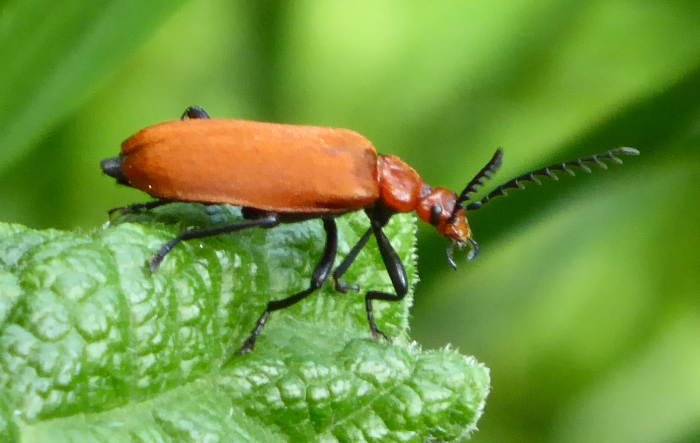


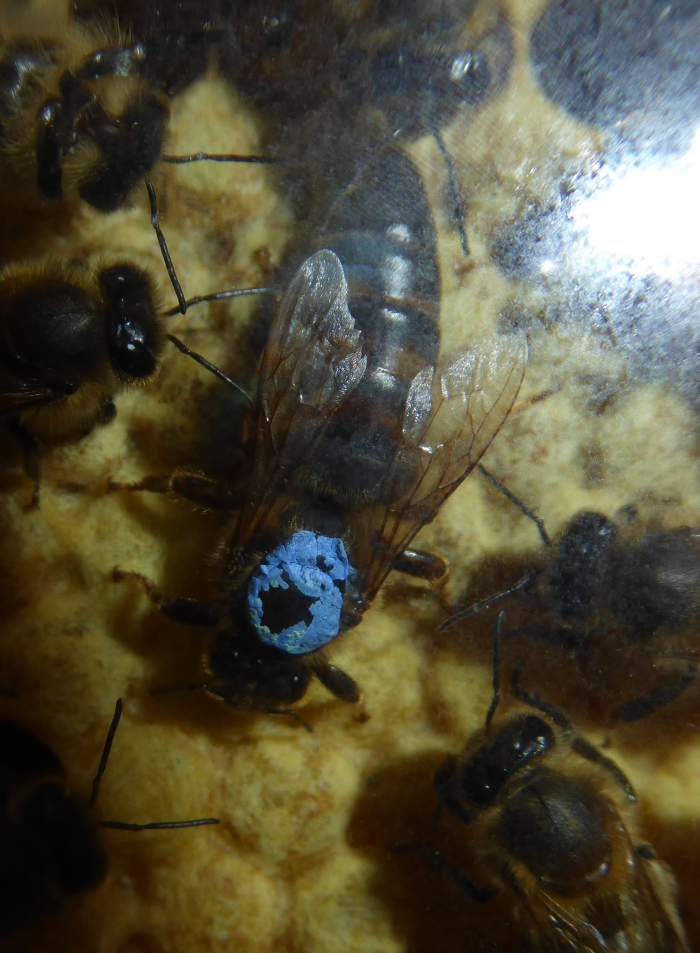


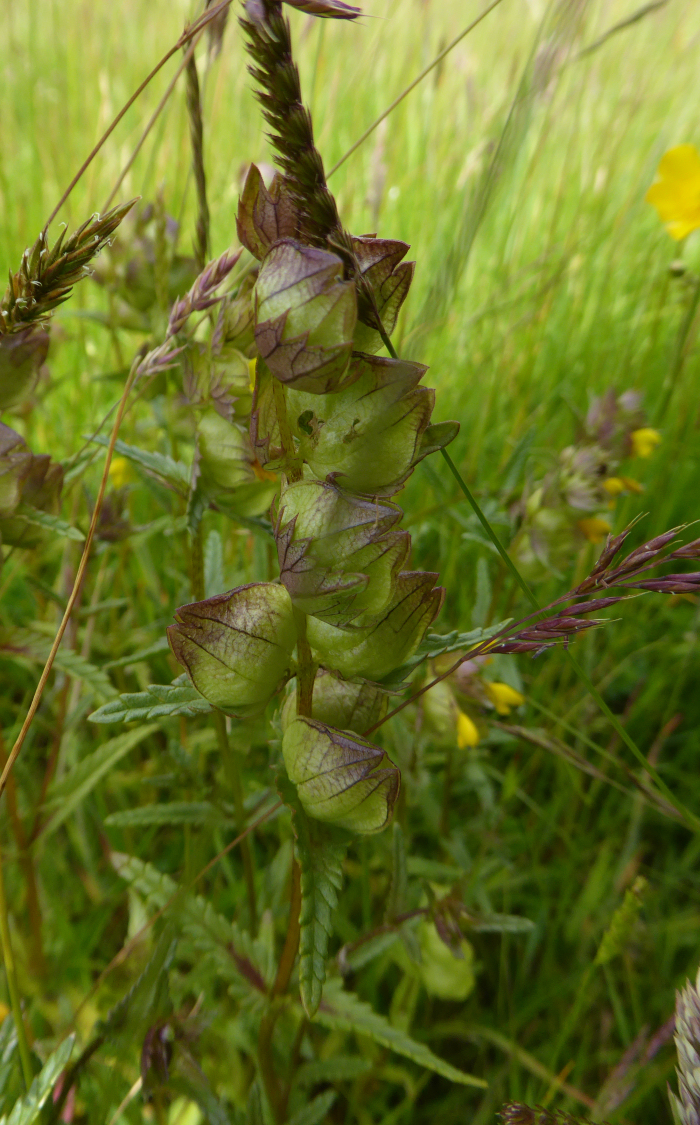
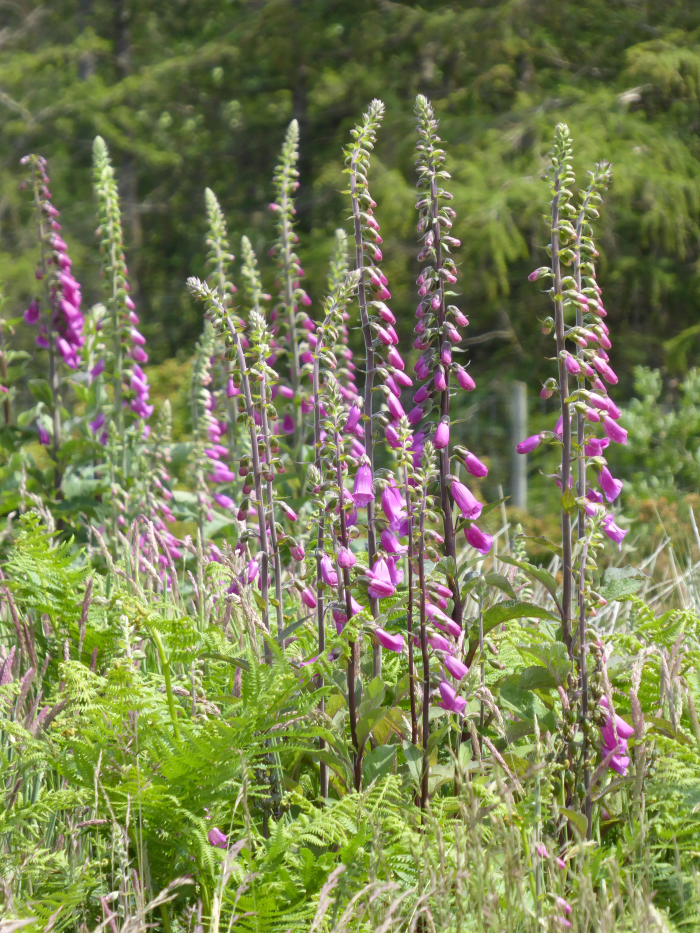







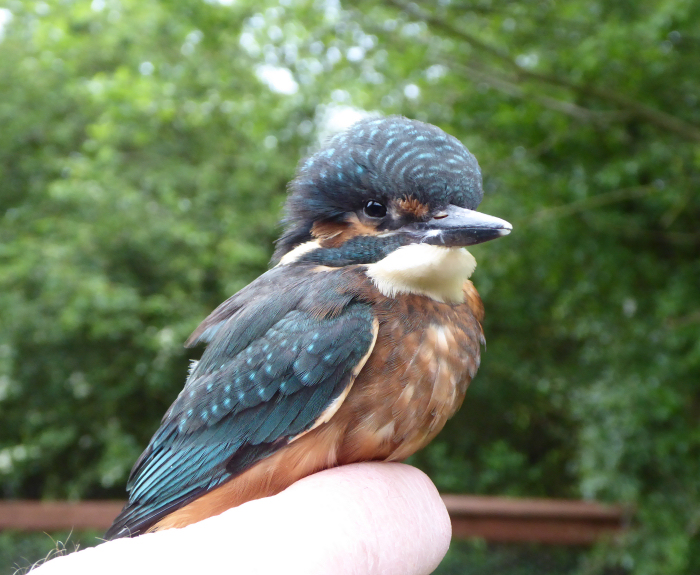
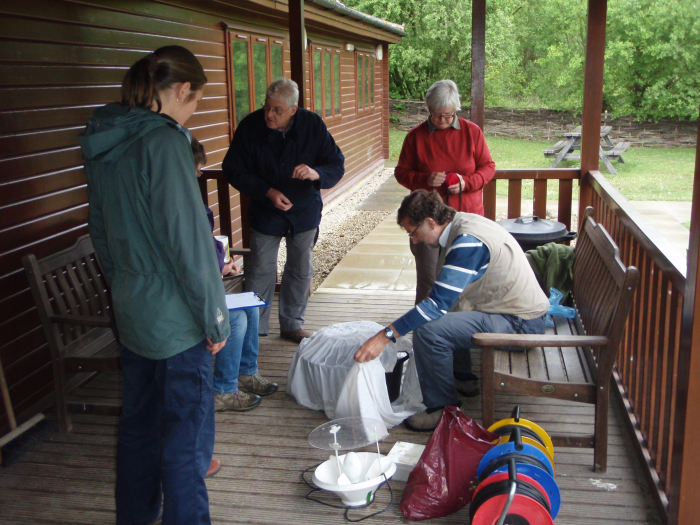
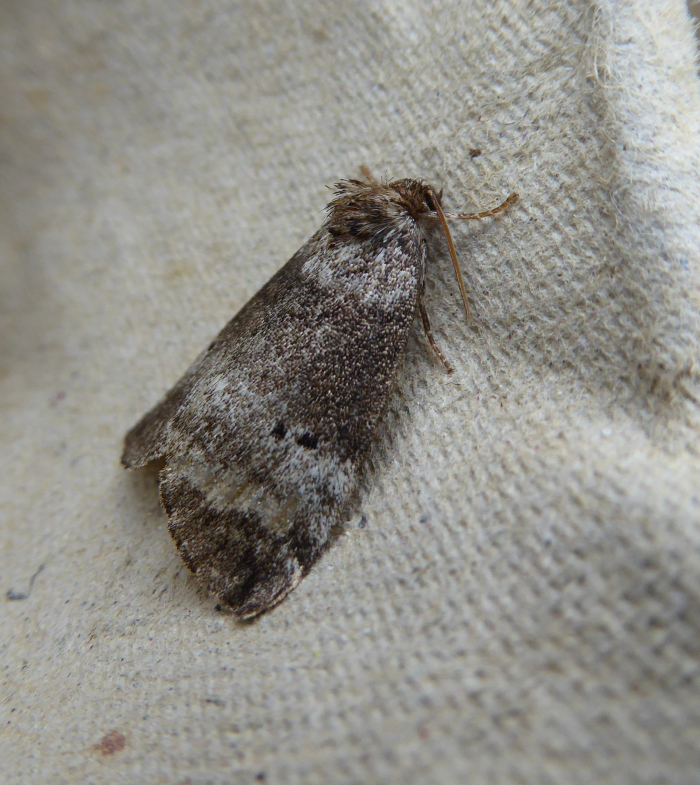

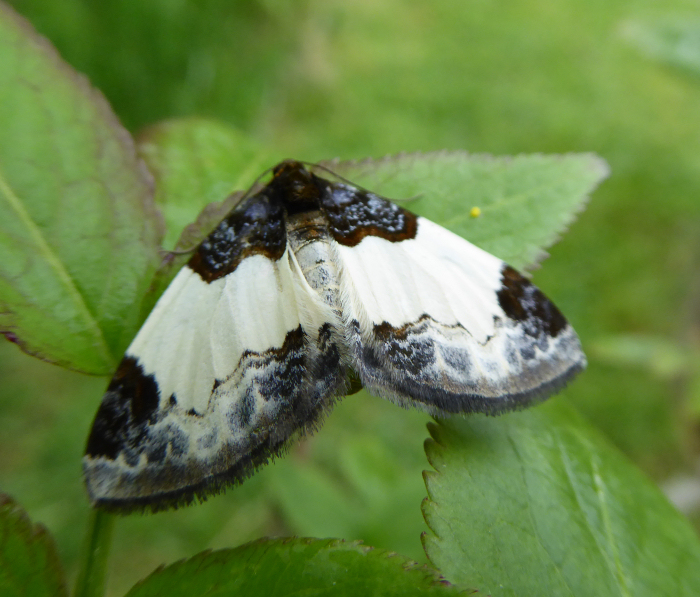
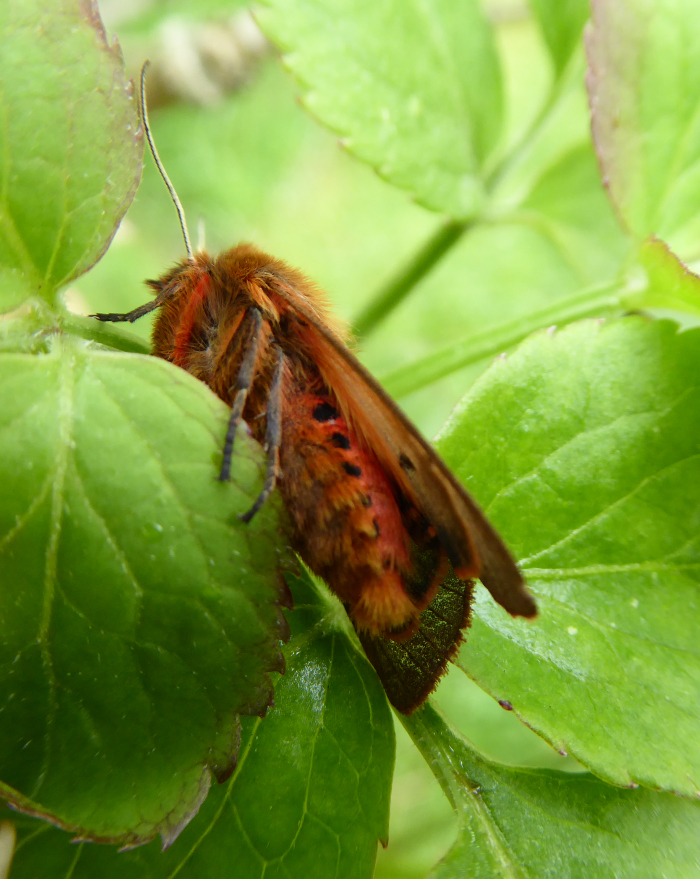
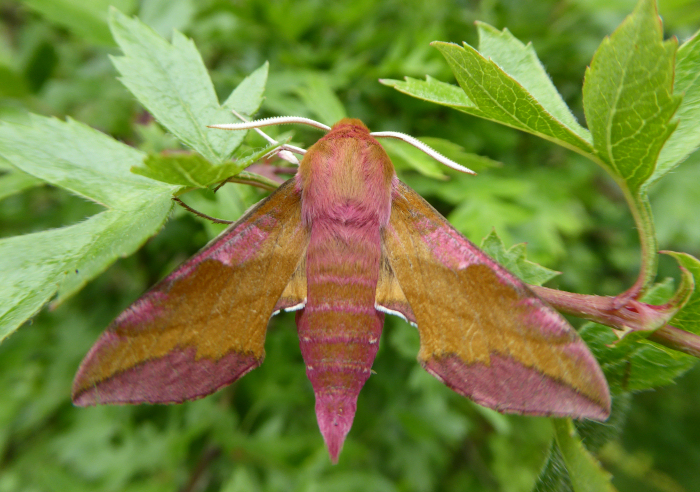
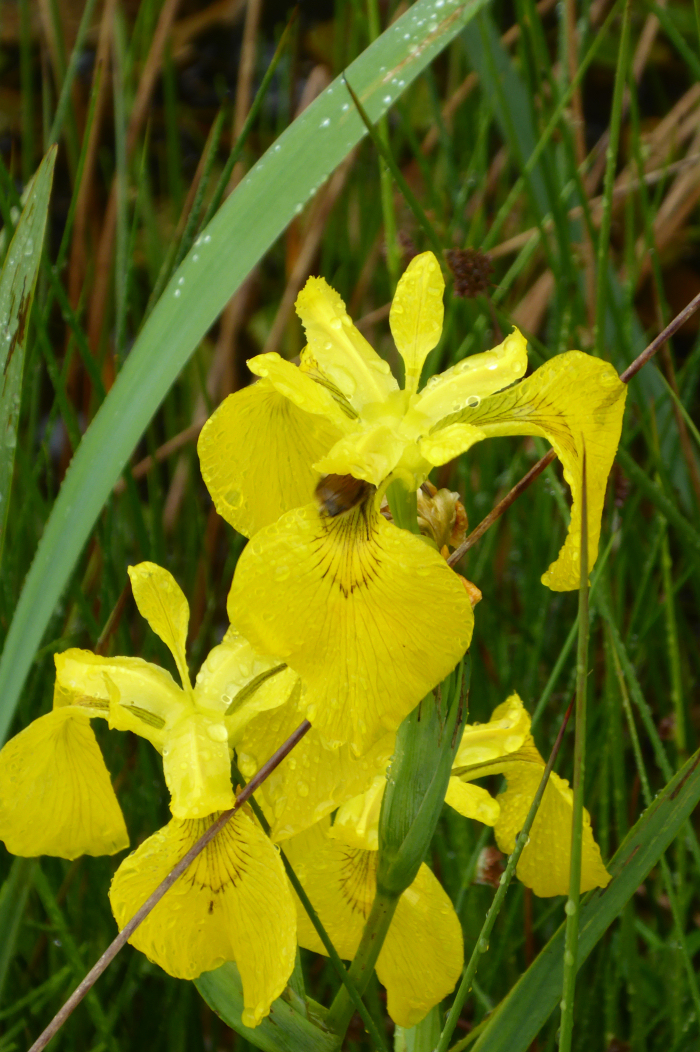

.JPG)
.JPG)





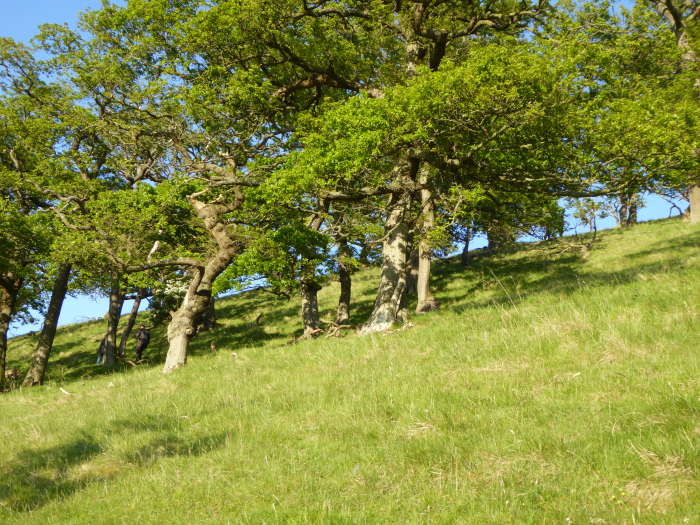
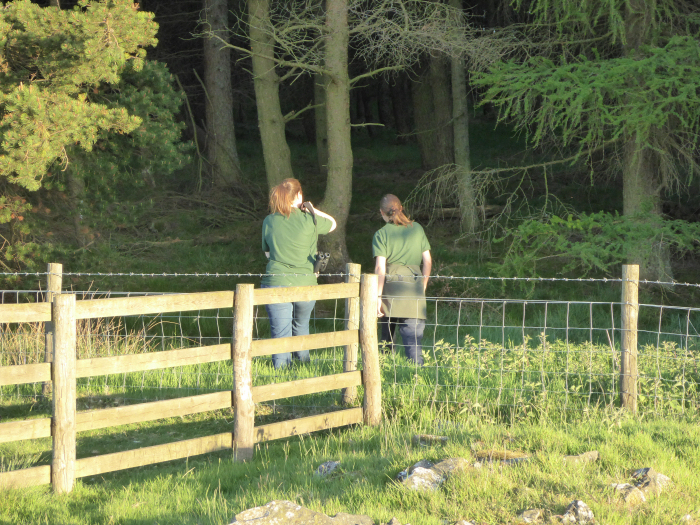


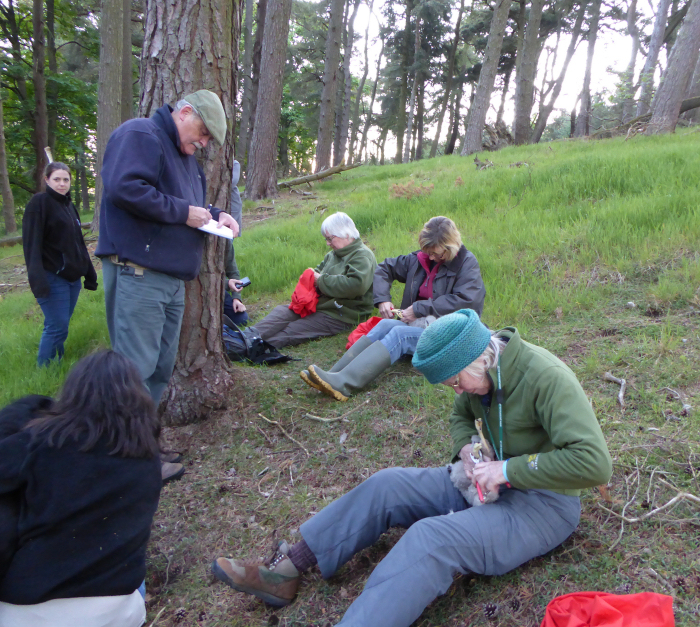
.JPG)
.JPG)










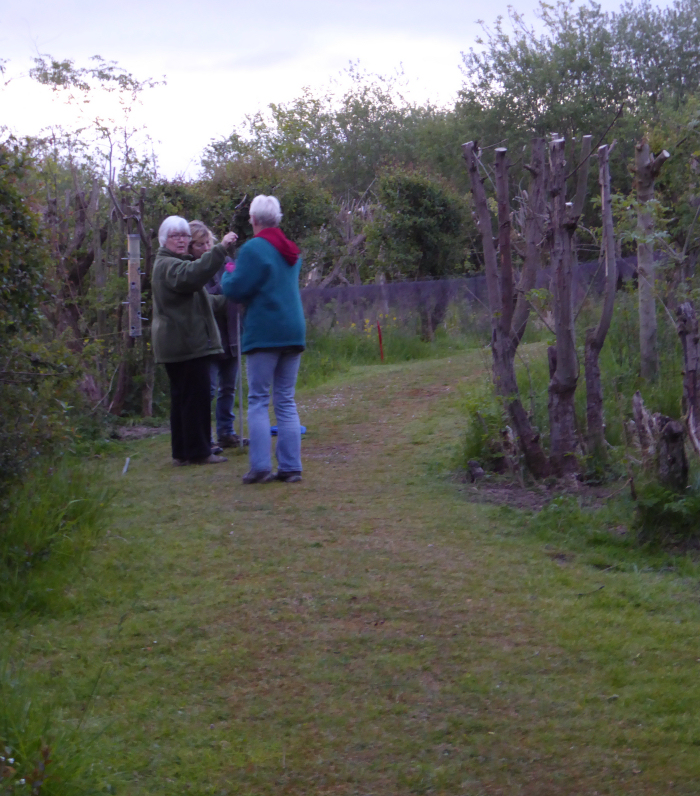
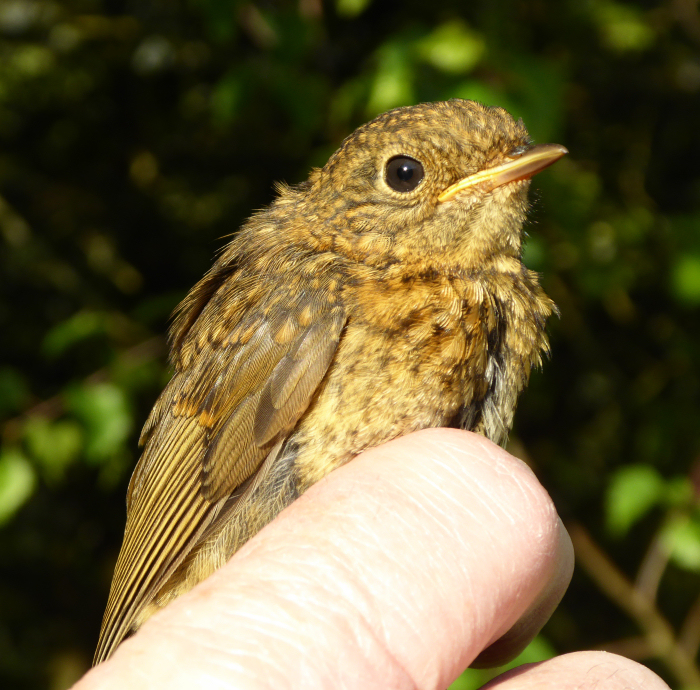
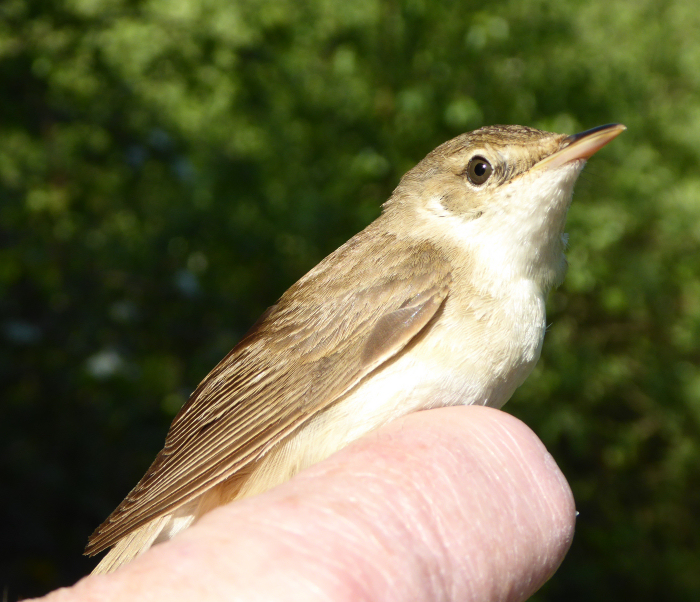
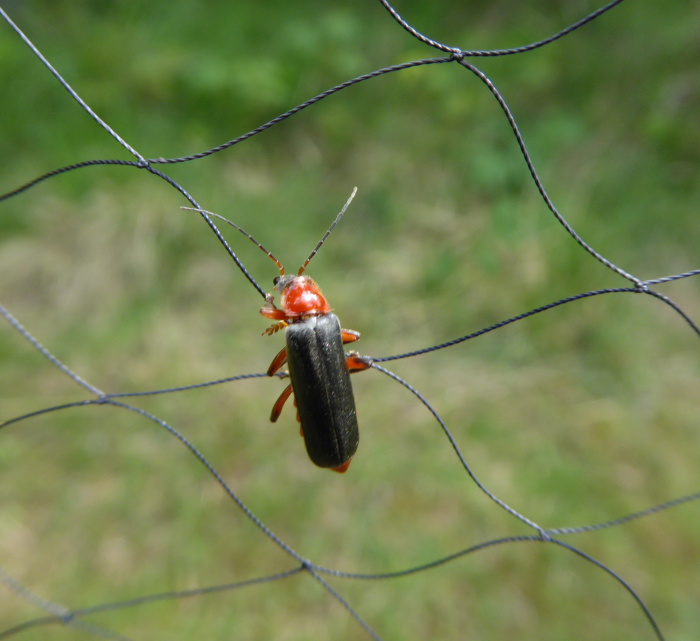





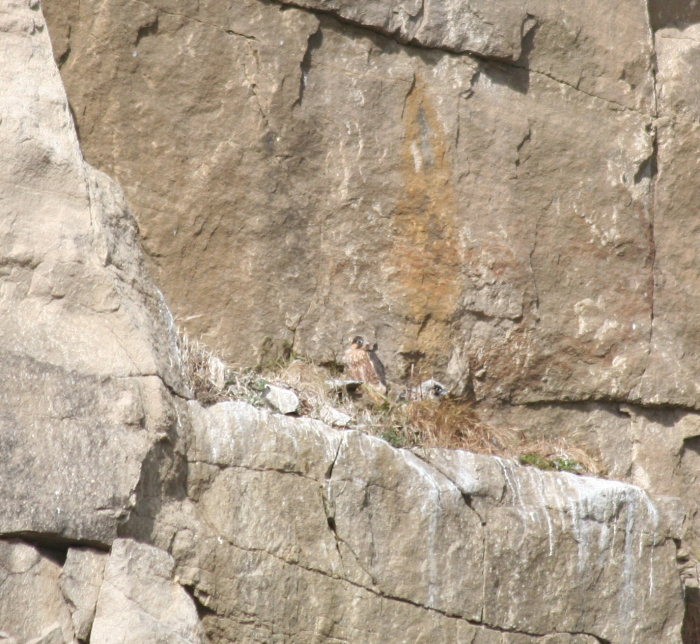
.JPG)
